Nestled in the heart of the Himalayas, the Kedarkantha trek stands as a testament to nature's raw beauty and the allure of winter adventures. Known as the "Queen of Winter Treks," this trek offers breathtaking panoramic views and an unforgettable experience for both novice and seasoned trekkers alike. In this ultimate guide, we'll cover everything you need to know about the Kedarkantha trek, including the trek distance, itinerary, package options, and the best time to embark on this snowy odyssey.
Table of Contents
- What is the Kedarkantha Trek?
- Kedarkantha Trek Route and Distance
- Best Time for Kedarkantha Trek
- Kedarkantha Trek Package and Cost
- Kedarkantha Trek Difficulty
- Unique Experiences on the Kedarkantha Trek
- Practical Tips for the Kedarkantha Trek
- Conclusion
What is the Kedarkantha Trek?
Kedarkantha is a popular winter trek located in the Uttarkashi district of Uttarakhand, India. It takes you to an altitude of 3,810 meters (12,500 feet), offering a perfect blend of challenging terrain and accessible beauty. The trek lies within the Govind Wildlife Sanctuary and is known for its serene landscapes, including snow-covered meadows and dense pine forests.
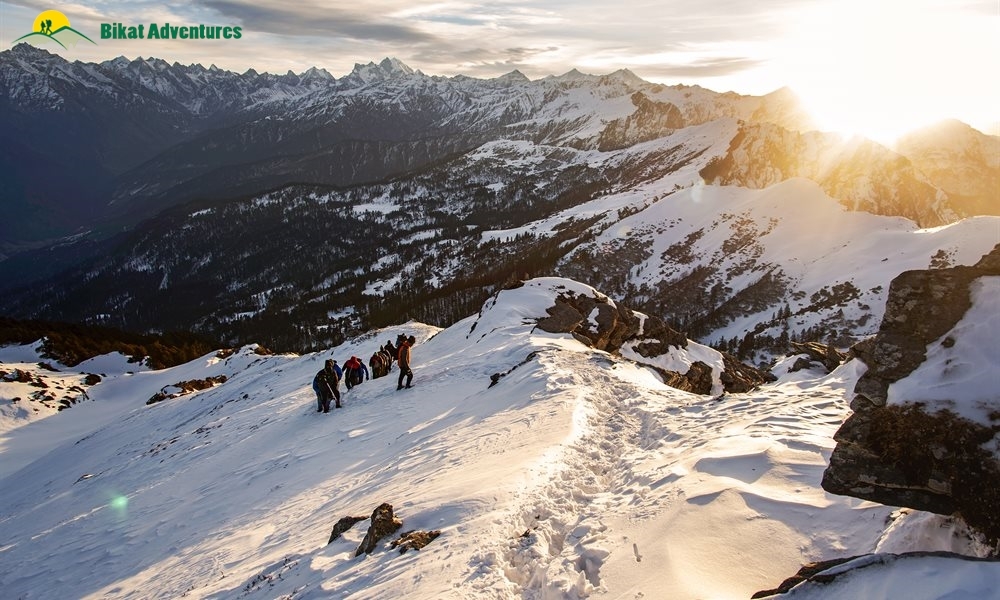
Kedarkantha Trek Route and Distance
The Kedarkantha trek distance typically covers about 20 kilometers and is spread over 4-6 days, depending on the itinerary. The route begins from Sankri village, the base camp for many Himalayan treks. From here, trekkers journey through Juda Ka Talab, a beautiful frozen lake, before reaching the Kedarkantha Base Camp. The trek culminates at the Kedarkantha summit, providing panoramic views of the Himalayan peaks such as Swargarohini, Bandarpoonch, and Black Peak.
Key Stops on the Kedarkantha Trek:
- Sankri (Base Camp)
- Juda Ka Talab
- Kedarkantha Base Camp
- Kedarkantha Summit
- Hargaon Camp
- Return to Sankri
Kedarkantha Trek Itinerary
A typical Kedarkantha trek itinerary spans 6 days, allowing ample time for acclimatization and enjoying the breathtaking scenery. Here's a detailed day-by-day breakdown of what you can expect on your Kedarkantha adventure:
Day 1: Drive from Dehradun to Sankri (1,950 m)
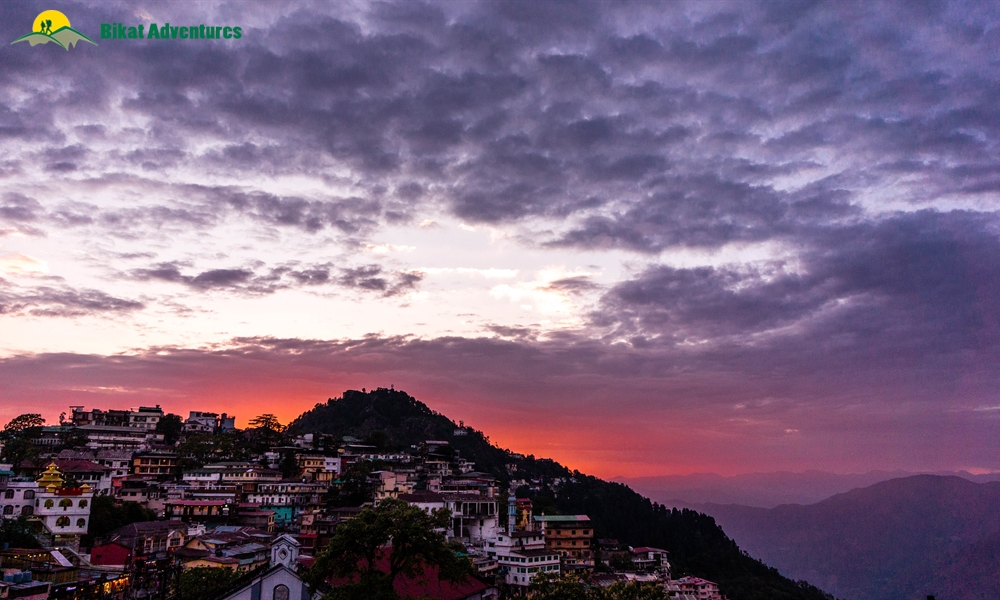
Your journey begins with a scenic drive from Dehradun to Sankri, covering approximately 220 km over 8-10 hours. The route takes you through picturesque locations like Mussoorie, Purola, and Mori, offering glimpses of the beautiful Himalayan landscapes.
- Distance: 220 km by road
- Duration: 8-10 hours
- Highlights: Scenic drive, first views of snow-capped peaks
- Accommodation: Guesthouse or homestay in Sankri
- Meals: Dinner
Upon reaching Sankri, you'll have time to explore this quaint mountain village, which serves as the gateway to several Himalayan treks. Use this time to check your gear, interact with fellow trekkers, and get a briefing about the days ahead.
Day 2: Trek from Sankri to Juda Ka Talab (2,700 m)
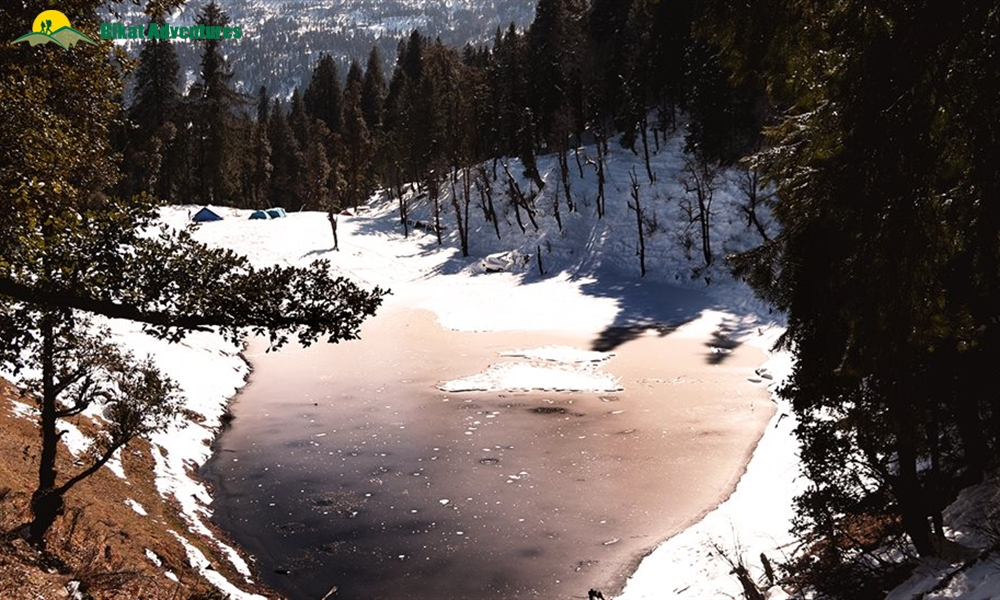
After an early breakfast, you'll begin your trek through dense pine and oak forests. The trail gradually ascends, offering occasional views of the snow-clad peaks ahead.
- Distance: 4 km trek
- Duration: 5-6 hours
- Altitude Gain: 750 m
- Terrain: Forest trails, gradual ascent
- Highlights: Pine and oak forests, first campsite experience
- Accommodation: Tents at Juda Ka Talab
- Meals: Breakfast, packed lunch, dinner
Juda Ka Talab, a pristine alpine lake, will be your campsite for the night. In winter, you might find the lake frozen, creating a magical atmosphere. This is an excellent spot for stargazing, weather permitting.
Day 3: Trek to Kedarkantha Base Camp (3,400 m)
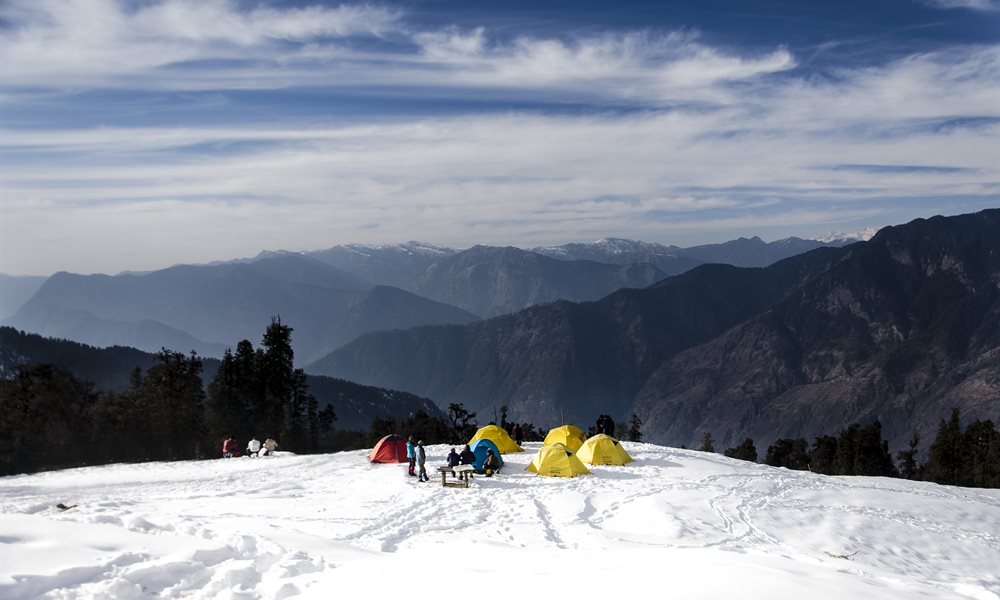
Today's trek takes you through beautiful meadows and dense forests. As you gain altitude, the landscape transforms, and you'll get your first proper views of the surrounding Himalayan peaks.
- Distance: 4 km trek
- Duration: 4-5 hours
- Altitude Gain: 700 m
- Terrain: Meadows, forest trails, steeper ascent
- Highlights: Changing landscapes, views of Himalayan peaks
- Accommodation: Tents at Kedarkantha Base Camp
- Meals: Breakfast, packed lunch, dinner
The Kedarkantha Base Camp offers stunning 360-degree views of the Himalayan range. You'll have time to acclimatize and prepare for the summit attempt the next day. Your trek leader will likely conduct a briefing about the summit climb.
Day 4: Summit Climb and Descend to Hargaon Camp (2,800 m)
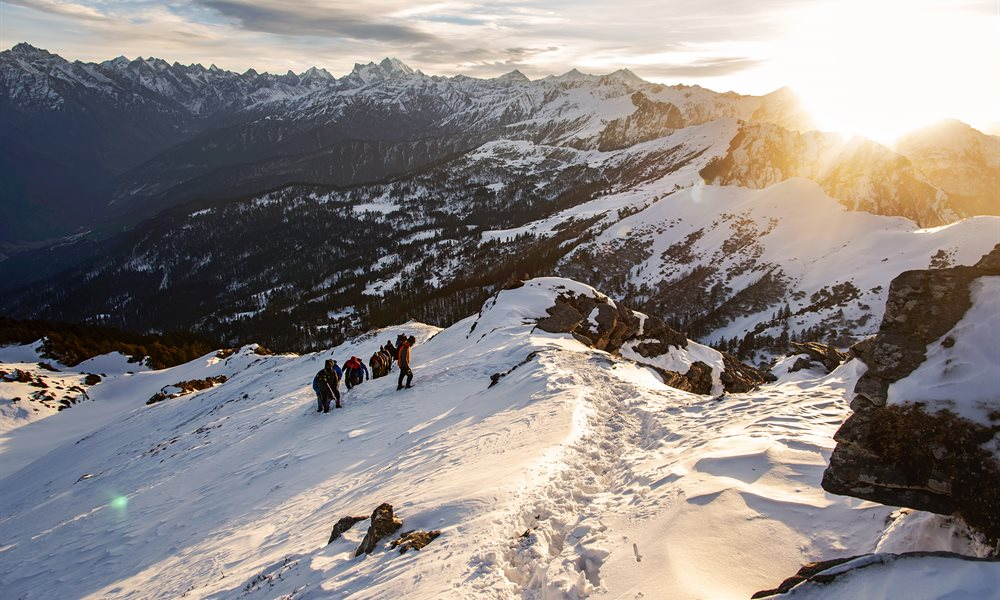
This is the most challenging and rewarding day of the trek. You'll start very early, often around 2-3 AM, to reach the summit for sunrise.
- Distance: 6 km trek (4 km ascent to summit, 2 km descent to Hargaon)
- Duration: 10-12 hours (including summit time)
- Altitude Gain: 410 m to summit, then descent
- Terrain: Snow-covered steep trails (in winter), rocky paths
- Highlights: Summit climb, panoramic views from the top, sunrise over the Himalayas
- Accommodation: Tents at Hargaon Camp
- Meals: Breakfast, packed lunch, dinner
The summit climb is steep and can be snow-covered in winter, requiring the use of micro-spikes. From the top, you'll be rewarded with breathtaking views of prominent peaks like Swargarohini, Bandarpoonch, and Black Peak. After spending time at the summit, you'll descend to Hargaon Camp for the night.
Day 5: Trek from Hargaon to Sankri
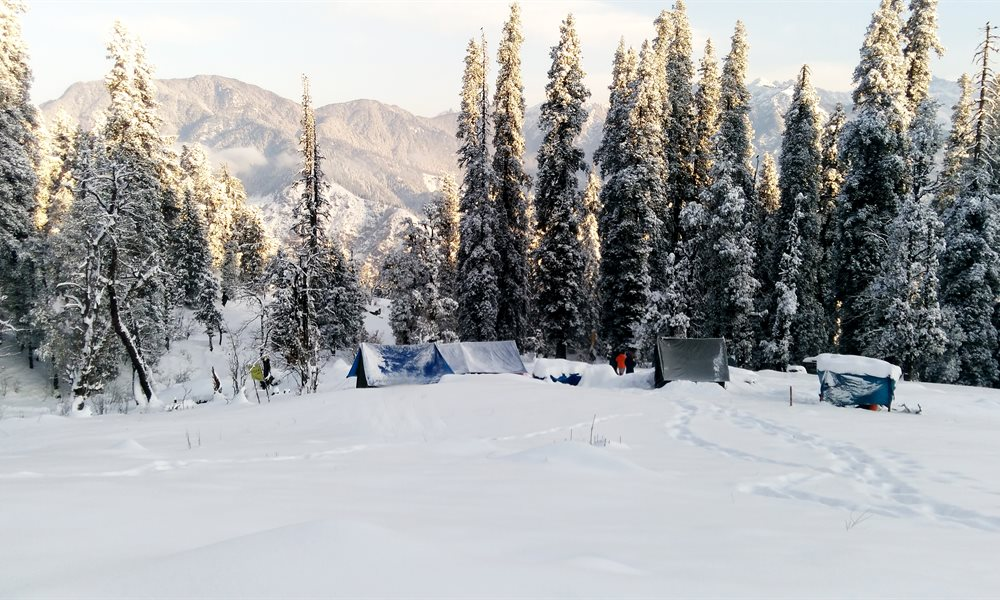
The final day of trekking takes you back to Sankri through beautiful forests and meadows. This is mostly a descending trail, offering a different perspective of the landscapes you crossed on the way up.
- Distance: 6 km trek
- Duration: 4-5 hours
- Terrain: Descending forest trails
- Highlights: Last views of the mountains, reflection on the journey
- Accommodation: Guesthouse or homestay in Sankri
- Meals: Breakfast, packed lunch, dinner
Back in Sankri, you'll have time to rest, celebrate your achievement with your fellow trekkers, and perhaps explore the village a bit more.
Day 6: Drive back to Dehradun
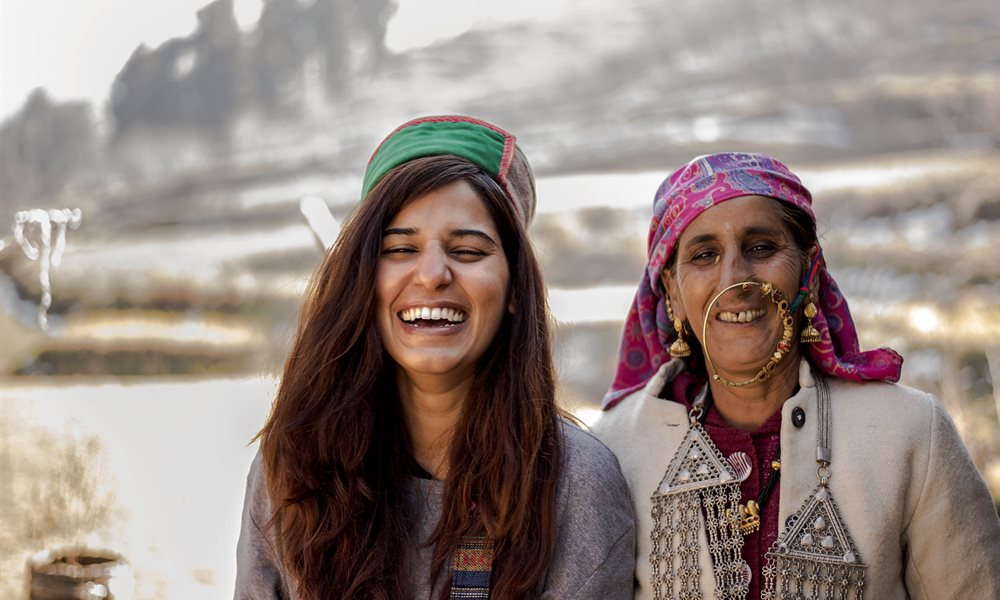
Your Kedarkantha adventure concludes as you make the return journey to Dehradun.
- Distance: 220 km by road
- Duration: 8-10 hours
- Meals: Breakfast
This drive gives you time to reflect on your trek, exchange contacts with new friends, and enjoy the last views of the mountains before returning to the city.
Important Notes:
- Flexibility: This itinerary may be adjusted based on weather conditions, group fitness levels, and unforeseen circumstances. Always follow the instructions of your trek leader.
- Acclimatization: The itinerary is designed to allow for proper acclimatization. Pay attention to how your body responds to the altitude and inform your trek leader of any discomfort.
- Winter Variations: If you're doing the Kedarkantha trek in December or other winter months, expect snow on the trails, especially from Day 3 onwards. This can affect trekking times and the level of difficulty.
- Fitness: While Kedarkantha is considered a moderate trek, the summit day is challenging. Ensure you're adequately prepared physically for long hours of trekking in potentially harsh conditions.
- Leave No Trace: Throughout the trek, follow responsible trekking practices. Carry all waste back with you and respect the natural environment and local communities.
This detailed itinerary gives you a day-by-day glimpse into what you can expect on the Kedarkantha trek. Each day offers its own unique experiences and challenges, culminating in the exhilarating summit climb. Whether you're drawn by the snowy landscapes of a winter trek or the blooming rhododendrons of spring, the Kedarkantha trek promises an unforgettable Himalayan adventure.
Best Time for Kedarkantha Trek
When is the best time to do the Kedarkantha trek?
It depends on what kind of experience you’re seeking.
- Winter Wonderland (December to February): If you’re looking for snow, the Kedarkantha winter trek is ideal. The landscape turns into a pristine winter wonderland, and temperatures can drop to sub-zero levels. A Kedarkantha trek in December is popular for Christmas and New Year’s celebrations amidst the snow.
- Spring Bloom (March to April): This is the best time for those who prefer moderate weather. The snow begins to melt, and lush meadows come alive with vibrant rhododendrons.
- Autumn Colors (September to November): Experience clear skies and vivid autumn foliage after the monsoon season. Although snow is scarce, the views are still breathtaking.
Kedarkantha Trek Package and Cost
The cost of a Kedarkantha trek varies based on the trek operator and package details. On average, you can expect to pay between INR 8,000 and INR 15,000 for a 6-day trek. This typically includes:
- Transportation from Dehradun to Sankri
- Accommodation in tents or lodges
- Meals during the trek
- Trek guides and leaders
- Permits and forest fees
It’s important to also consider additional costs for personal gear and insurance when calculating the total Kedarkantha trek cost.
Kedarkantha Trek Difficulty
The Kedarkantha trek difficulty is rated as moderate, making it suitable for beginners and families. However, the snowy conditions in winter can add a bit of challenge, particularly on the summit day. Key factors include:
- Altitude: Reaching 12,500 feet can cause altitude-related issues.
- Weather: Winter trekkers must be prepared for sub-zero temperatures and snow-covered trails.
- Terrain: The trek features steep ascents and descents, especially when approaching the summit.
Unique Experiences on the Kedarkantha Trek
- Camping by Juda Ka Talab: This frozen alpine lake is a stunning location for your overnight camp, surrounded by legends and serene natural beauty.
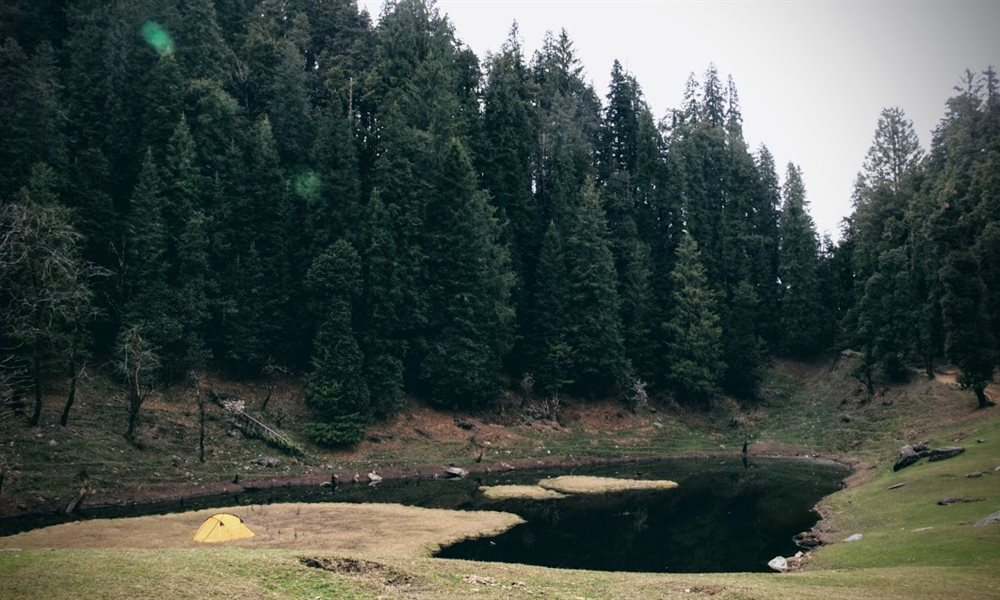
- Summit Midnight Push: For most trekkers, the midnight push to the Kedarkantha summit is an exciting experience, made all the more special by the sunrise over the Himalayas.
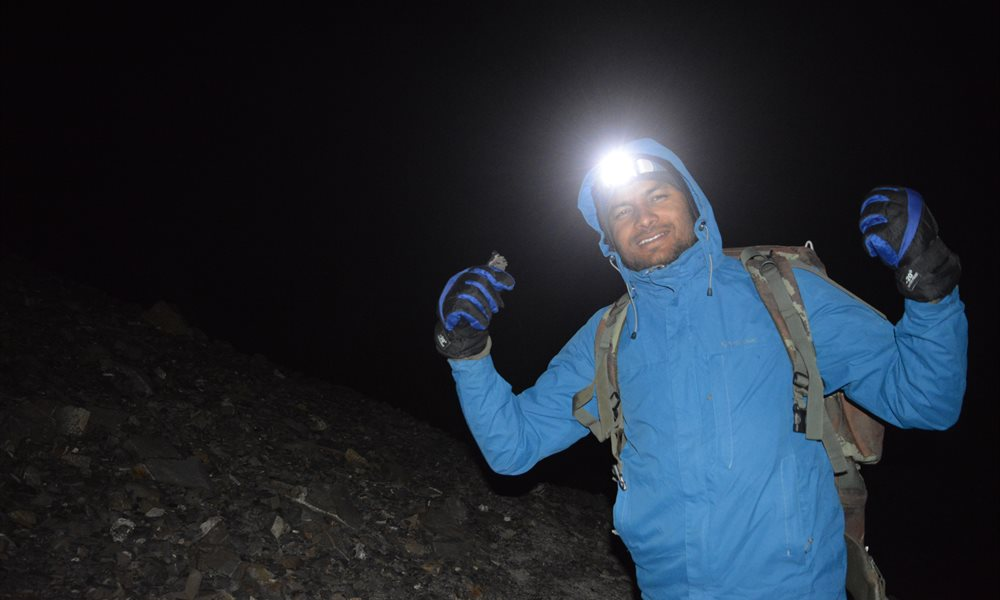
- Snow Fun: During winter months, trekkers often enjoy activities like sliding down snowy slopes, building snowmen, or even just the adventure of trekking in deep snow with micro-spikes.
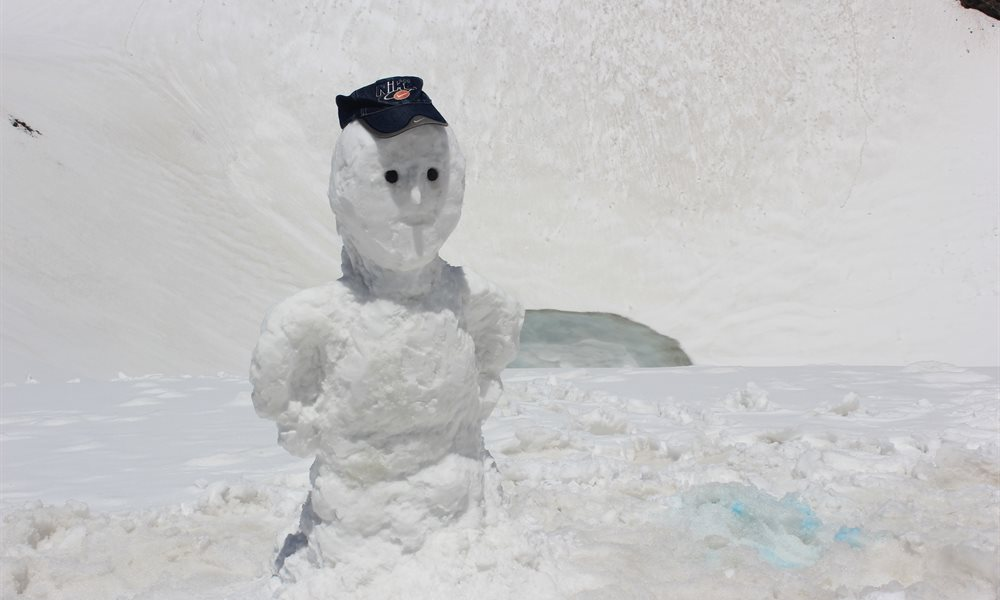
- 360-Degree Panoramic Views: The summit provides a breathtaking view of the surrounding Himalayan ranges, including the Gangotri, Yamunotri, and Kinner-Kailash ranges.
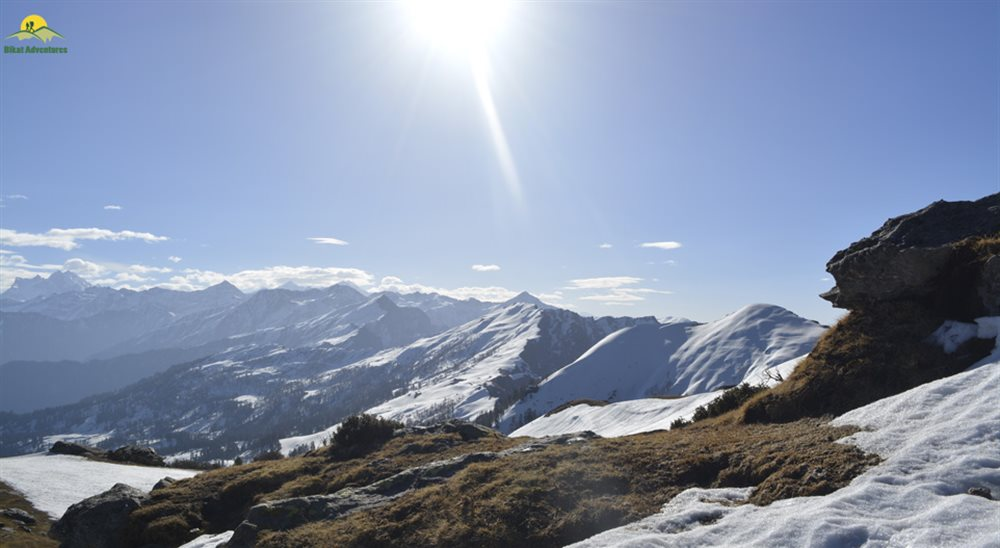
Practical Tips for the Kedarkantha Trek
- Fitness Preparation: Ensure you prepare for the trek by focusing on cardio and strength training, especially for your legs.
- Acclimatization: Take time to acclimatize properly to avoid altitude sickness. Stay hydrated and listen to your body.
- Gear and Clothing: Carry adequate winter gear, including waterproof boots, insulated jackets, and sleeping bags rated for cold temperatures.
- Photography: Cold temperatures drain batteries quickly, so carry extra batteries for your camera to capture the stunning Kedarkantha trek photos.
Conclusion
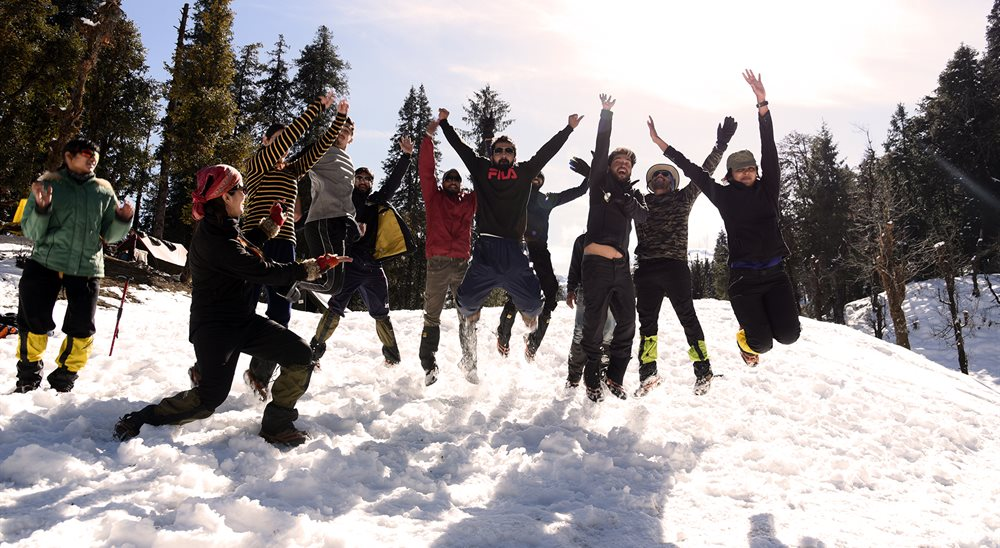
The Kedarkantha trek offers an unforgettable adventure through the snow-capped Himalayan ranges, whether you're seeking a thrilling winter expedition or a tranquil spring trek. With a reasonable trekking distance, moderate difficulty level, and breathtaking summit views, Kedarkantha continues to be a favorite among adventure seekers. Whether you’re trekking from Delhi, Dehradun, Pune, or elsewhere, this Himalayan experience promises to be one of a lifetime.
So, are you ready to conquer the Queen of Winter Treks? Begin planning your Kedarkantha adventure today and prepare to make memories that will last forever.





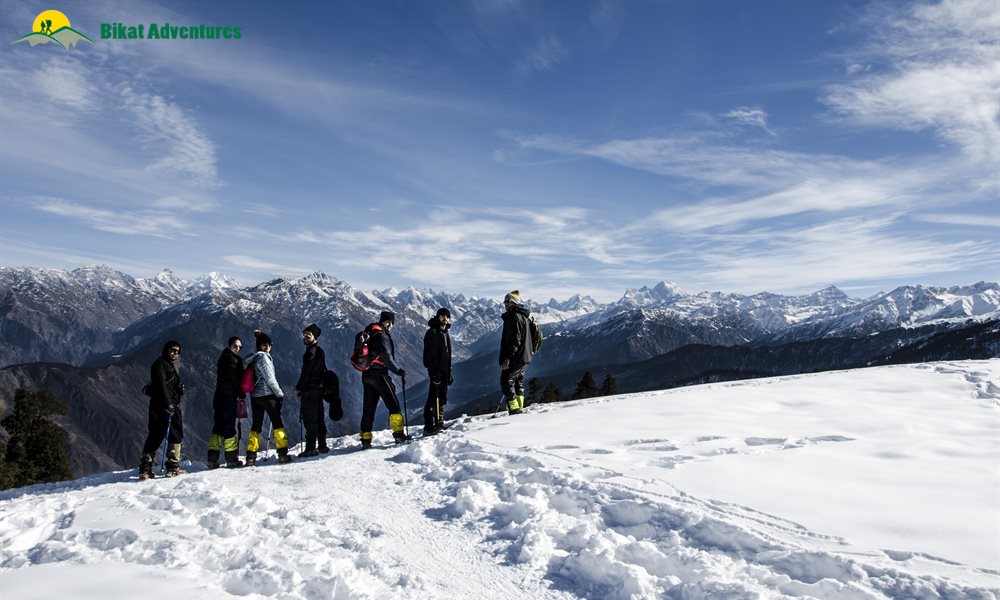
Comments